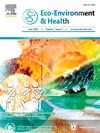Park pricing in theory and practice and implications for ecosystem and human health
引用次数: 0
Abstract
Though a rich literature addresses the theory of park pricing, less attention has been paid to the practical realities. In this narrative review article, we ask why the setting of national park entry fees varies in practice, and we link this back to the underlying theory, the empirical academic literature, and practical realities. Park entry pricing strategies tend to differ considerably in higher and lower-income countries, reflecting practical realities of how to fund a national park system. Parks in higher-income countries are often free at the point of entry, consistent with the efficient pricing of global public goods. In contrast, differential pricing for local and foreign tourists is common in lower-income countries, an example of price discrimination that increases overall park revenues. We highlight a number of areas for further research. First, the concept of fairness and equitable access is an important practical consideration, linked to who benefits from visiting parks versus who pays, but much more attention needs to be paid to this in the literature. Second, while there is increasing recognition of the importance of green spaces for health and well-being, the literature largely ignores how health considerations might influence park entry fees, suggesting that more research is needed at the nexus of pricing, health and well-being, and equitable access. Finally, many lower-income countries that have a high dependence on foreign visitor fees to fund their national park systems are vulnerable to global shocks, suggesting research is needed into how to increase long-term sustainability of funding sources.

公园定价理论与实践及其对生态系统和人类健康的影响
虽然研究公园定价理论的文献很多,但对实际情况的关注较少。在这篇叙述性评论文章中,我们将探讨为什么国家公园入场费的设置在实践中会有所不同,并将其与基础理论、实证学术文献和实践现实联系起来。高收入国家和低收入国家的公园门票定价策略往往差别很大,这反映了如何为国家公园系统提供资金的实际现实。高收入国家的公园通常在入口处是免费的,这与全球公共产品的有效定价相一致。相比之下,对本地和外国游客的差别定价在低收入国家很常见,这是价格歧视增加公园整体收入的一个例子。我们强调了一些需要进一步研究的领域。首先,公平和公平准入的概念是一个重要的实际考虑因素,它与谁从参观公园中受益与谁付钱有关,但在文献中需要对此给予更多的关注。其次,虽然人们越来越认识到绿地对健康和福祉的重要性,但文献在很大程度上忽略了健康因素如何影响公园入场费,这表明需要对定价、健康和福祉以及公平准入之间的关系进行更多的研究。最后,许多高度依赖外国游客费用为其国家公园系统提供资金的低收入国家很容易受到全球冲击的影响,这表明需要研究如何提高资金来源的长期可持续性。
本文章由计算机程序翻译,如有差异,请以英文原文为准。
求助全文
约1分钟内获得全文
求助全文
来源期刊

Eco-Environment & Health
环境科学与生态学-生态、环境与健康
CiteScore
11.00
自引率
0.00%
发文量
18
审稿时长
22 days
期刊介绍:
Eco-Environment & Health (EEH) is an international and multidisciplinary peer-reviewed journal designed for publications on the frontiers of the ecology, environment and health as well as their related disciplines. EEH focuses on the concept of “One Health” to promote green and sustainable development, dealing with the interactions among ecology, environment and health, and the underlying mechanisms and interventions. Our mission is to be one of the most important flagship journals in the field of environmental health.
Scopes
EEH covers a variety of research areas, including but not limited to ecology and biodiversity conservation, environmental behaviors and bioprocesses of emerging contaminants, human exposure and health effects, and evaluation, management and regulation of environmental risks. The key topics of EEH include:
1) Ecology and Biodiversity Conservation
Biodiversity
Ecological restoration
Ecological safety
Protected area
2) Environmental and Biological Fate of Emerging Contaminants
Environmental behaviors
Environmental processes
Environmental microbiology
3) Human Exposure and Health Effects
Environmental toxicology
Environmental epidemiology
Environmental health risk
Food safety
4) Evaluation, Management and Regulation of Environmental Risks
Chemical safety
Environmental policy
Health policy
Health economics
Environmental remediation
 求助内容:
求助内容: 应助结果提醒方式:
应助结果提醒方式:


